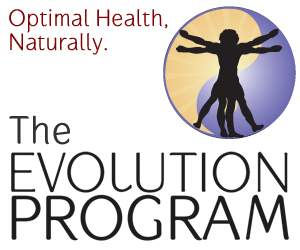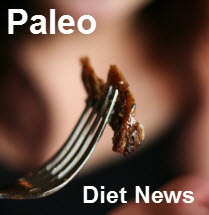The Paleo Diet and Therapeutic Fats
Being a former low-fat foodie, I must confess I still get a kick out of the amount of fat I can now eat on the paleo diet, safe in the knowledge that it’s doing my body a lot of good, not harm. So I thought it might be fun to do a quick round-up of my favourite therapeutic fats, most of which I consume on a daily basis in lavish quantities. What are yours?
Coconut Oil
I eat at least a couple of tablespoons of this daily - sometimes just melted in water (or even coffee), and often as a medium for cooking. Coconut oil is traditionally used in the tropics for cooking and also topically on the skin as a terrific moisturizer. It melts at between 71 and 76 degrees fahrenheit, and so is usually solid at room temperature. It’s best to look for virgin coconut oil which has been extracted without the use of high heat and harmful chemicals. Coconut oil confers a number of benefits. Its Medium Chain Triglycerides convert directly to energy in the body, rather than storing as fat; it contains Lauric Acid, an important nutrient found most commonly in mother’s milk; and there are indications that it is particularly supportive of brain health, and could play an important role in treating Alzheimer’s disease.
- More on Coconut Oil and brain health
- Lose weight using Coconut Oil with Sally Fallon and Mary Enig’s ‘Eat Fat, Lose Fat’
- Learn about the manifold benefits of Coconut Oil with Bruce Fife’s ‘The Coconut Oil Miracle’
Cod Liver Oil
This used to be a standard supplement in Europe, although it has fallen out of favour in recent years. In the paleo community, there is some debate about the efficacy of this or other fish oils. My own take is that - provided they are prepared and stored properly - there are definite benefits to be had. I buy high-vitamin fermented cod liver oil, which is more resistant to rancidity and has a higher concentration of nutrients. Cod liver oil provides fat-soluble vitamins A and D, and is also rich in Eicosapentaenoic Acid (EPA). The body manufactures this as an important link in the chain of fatty acids that create localised tissue hormones (prostaglandins). Cod liver oil also provides a good dose of omega-3 fatty acids, and is a good way of ensuring that the omega-3:omega-6 balance of the diet is complemented. It’s fair to say, cod liver oil isn’t particularly tasty. I usually “float” a spoonful of it in a shot-glass of coconut milk or green smoothie, and down the hatch it goes. I think I may have just invented the Cod Liver Oil Slammer. After all - who needs tequila??
- More on choosing your Cod Liver Oil
- Learn more about the Cod Liver Oil debate - and make up your own mind
High Vitamin Butter Oil
Dr. Weston A Price claimed that he got great results by giving this to patients along with cod liver oil (i.e. better results than he got from prescribing cod liver oil alone). Made from the deep yellow butter of cows which feed on rapidly growing green grass in the spring and autumn, the oil is made by centrifuging the butter at a low temperature. The process concentrates the nutrients in the oil, making it particularly rich in vitamins A and D, and also in what Price called the ‘X Factor’, now believed to be vitamin K2. It is recommended that high-vitamin butter oil be used as a supplement to regular dietary butter, particularly during the winter months, or if you’re unsure of the pedigree of the butter you’re using. Half a teaspoon daily is all that’s needed, so - although it’s pricey (pardon the pun!) - a little goes a long way.
Evening Primrose, Borage, and Black Currant Oils for GLA
Full disclosure: at present, I don’t take any of these, but I’m sharing the information here in case it’s of use to you. These oils contain a fatty acid called Gamma-Linoleic Acid (GLA), which the body produces from omega-6 linoleic acid. In some individuals, the effectiveness of the enzymes necessary for conversion to GLA are compromised. Consequently, GLA-supplementation helps some individuals. GLA-rich oils are sometimes used to treat acne, cancer, premenstrual syndrome, breast disease, irritable bowel syndrome, and cystic fibrosis. Be aware that some people argue that these oils are susceptible to rancidity outside of the whole food, and should be avoided. Others claim great results from their use. The likelihood is that - provided the sources are reliable - these oils will be beneficial in some cases. Do your research!
***
That’s your quick round-up on therapeutic fats. Don’t forget, of course, that the real therapeutic fats are those that we include in our paleo diets on a daily basis. Fats from healthy, properly reared animals; pastured butter; egg-yolks from free-range hens; olive, avocado and macadamia-nut oils. These should all have a place in your diet. Eat them, enjoy them, and revel in the fact that they’re nourishing you.
If you found this article useful, please click the ‘LIKE’ button below to share on Facebook. We also invite you to leave comments, and join the Paleo Diet News discussion!
Brian Cormack Carr is a life and career coach, charity CEO, writer, and advocate of a real foods diet.
His home on the web is www.cormackcarr.com where you will find more articles, his free Lifecrafting Newsletter, and information about his online career-creation programme www.vitalvocation.com.
You can follow Brian on Twitter: @cormackcarr






Pingback: Paleo Diet News: The Truth About Fat? » Your source for Paleo Diet information